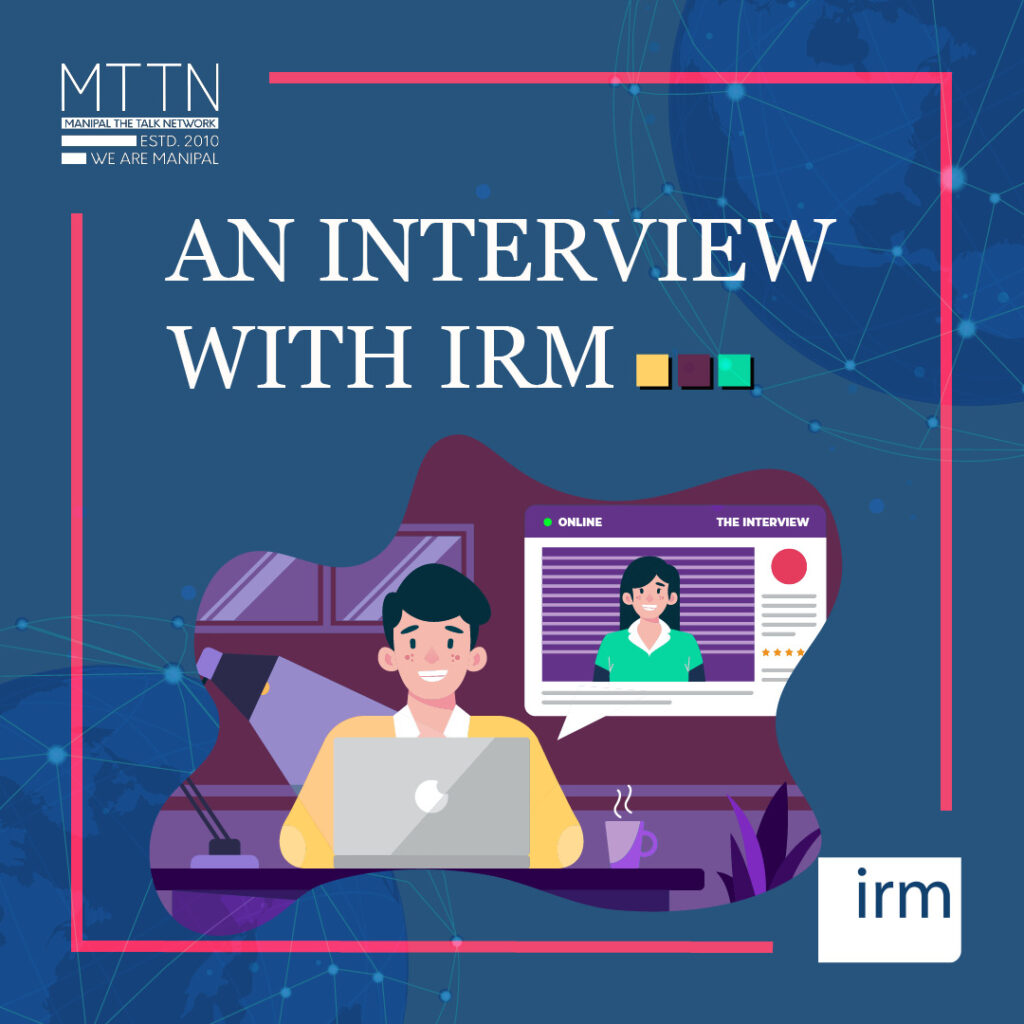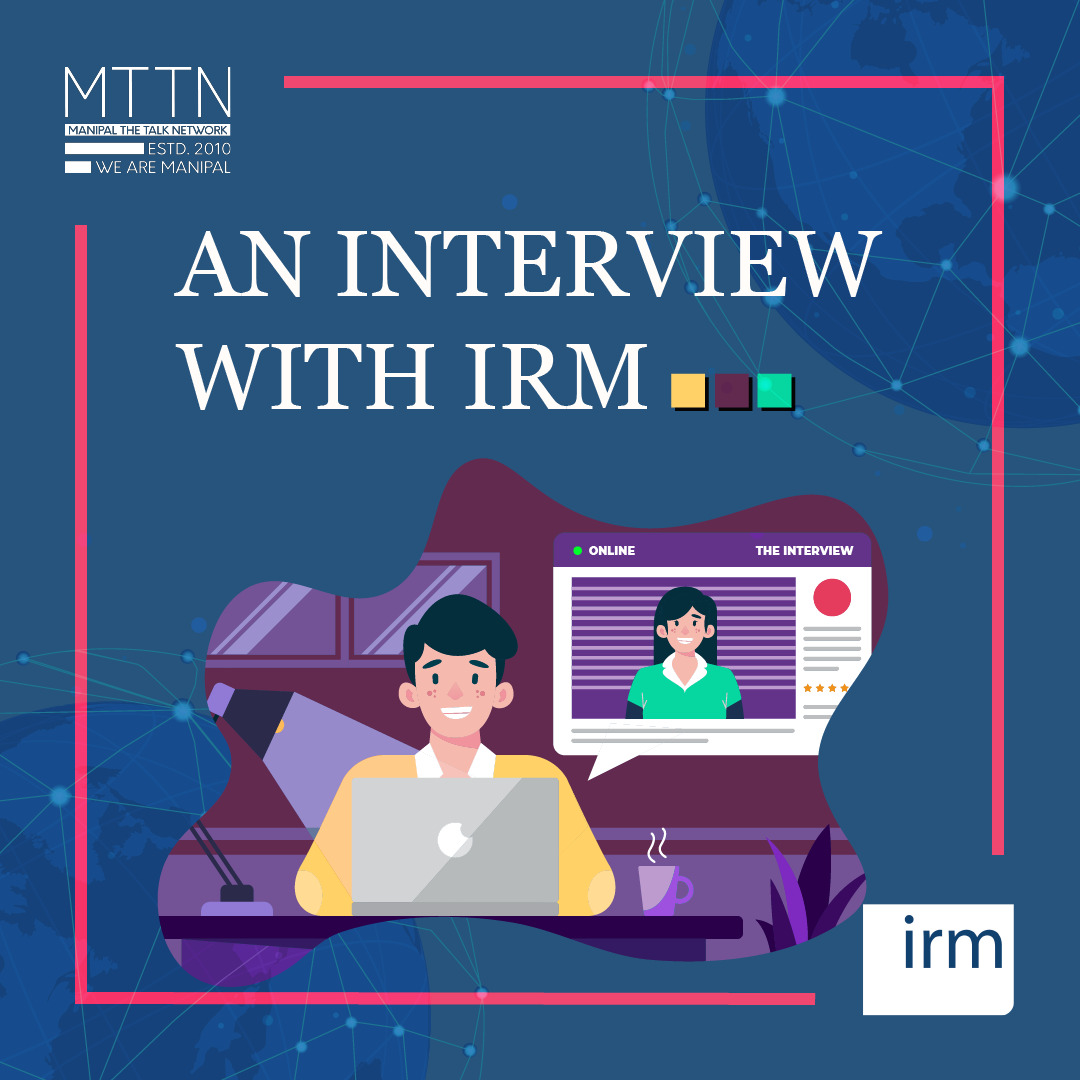
Following our previous interview with Kosha Shah, Head of Academics and Corporate Alliances at the Institute of Risk Management, MTTN spoke with Anay Dasani, Head of Partnerships. Working alongside corporates and educational institutions, IRM ties up with multiple organizations for level examinations and customized training programs.
MTTN- Could you give us a brief introduction to risk management in India?
Anay- I honestly believe risk management in India is not yet as advanced or as well-known and studied as it is maybe in Europe or the States because in India Risk management solely focuses on finance and insurance whereas in IRM we incorporate ideologies pursued abroad, which would be Enterprise Risk Management. ERM is a more holistic view of risk in an organization, or a startup, or a family business, or an individual’s life.
ERM is not widely used in India yet, and we are trying to spread it all over through the current organizations. Because we believe risk goes further than just finance and insurance; there are various other risks an organization faces such as human resource risk, people risk, supply chain management risk, corporation risk, technology risk, etc.
MTTN- Do you feel risk literacy is the need of the hour?
Anay- Yes, as we know a risk is inherent in any business scenario, in any business organization, and at every level. I honestly believe that risk literacy must become part of common business parlance.
When I speak about risk literacy, what is it? It is an individual or an organization’s ability to perceive certain risks that they may face and it provides them with the aptitude to identify them, analyze them and make appropriate decisions, to mitigate the effects of the risk to a certain level.
Risk literacy in a way enables certain individuals and organizations to develop a certain foresight and also to develop better risk mitigation skills. It also puts them in a better position to identify and strategize as to how to mitigate the risk and to deal with it in a well-informed manner.
MTTN- Okay, so what is an enterprise-wide risk then?
Anay- Enterprise-wide risk goes beyond the confinement of just financial or insurance risk. Enterprise risk management is essentially enterprise-wide risk management because it’s the various risks an enterprise or an organization may face. It could be any huge organization or it could be a start-up or it could be a family business.
Risks are faced at various levels: it could be financial risks, technology risks, operational risks. There are also various human risks the companies can face, there are many short-term and long-term risks.
Enterprise risk management is the ability to identify all these risks, at every level or in every sector of an organization, to be able to strategize in a way to work around them or work with them. Of course, all risks cannot be eliminated, but it is possible to reduce the negative effects they have on the workplace.
MTTN- Can you tell us about the importance of shifting from financial and insurance risk to enterprise-wide risk?
Anay- By focusing on financial and insurance risk alone, a lot of individuals and organizations tend to miss out on the various other risky aspects of business cases. As I stated before, ERM includes all sorts of risks. So, when one only talks about financial Risk and insurance risk, they might overlook other risks. Because of this, they may be less profitable than they would be if they looked at other risks and learned how to mitigate them as well.
MTTN- What is the industry application for qualified risk professionals who have cleared IRM’s examinations?
Anay- Yeah, so IRM’s level 1 exam focuses on the fundamentals of risk management. The applications come from a wide range of sectors and streams, for example, we don’t get only commerce students for examinations and qualifications. 30 to 40 percent of students who clear the level 1 exam come from engineering and science backgrounds.
MTTN- Is there any prerequisite condition for taking the examination do you require any?
Anay- We have five levels. To begin at Level 1, you need to be a 12th-grade pass. And the first level has two categories: student and professional. This is, of course, because they both will have different backgrounds and experiences and are likely to be of different ages.
To progress to Level 2, you need to pass Level 1. You can get a Level 1 exemption as well and directly go to Level 2, if you have 2+ years of experience in risk, while working of course. There is also a Level 4 exemption for candidates who have 8 plus years of experience in risk.
MTTN- Okay so, it’s not like an exam where you can clear one and just keep on going. You need to have experience in each level, right?
Anay- If you clear Level 1 you can go on to Level 2 and Level 3. However, Level 4 and Level 5 are more application based. Level 1 and Level 2 both have multiple choice papers, and Level 3 is a case study that takes around 12 to 18 months to clear, and it’s based on your submission and assignments. Levels 4 and 5 are application-based.
An individual who has already been working in the industry can apply to be a Level 4 or 5 IRM certified professional and they get a designation along with it if the application is accepted and there’s no examination. It is a membership-based grant designation and qualification.
MTTN- In your opinion, what qualities will organizations look for when recruiting in a post-crisis world?
Anay- The main skills would be, first, to be well-informed, because the world is changing every minute, it is ever-evolving and so are the risks.
Second, to be open-minded. This is important because learning is constant, and there could be various scenarios that involve various risks.
Lastly, good communication skills are a must, because everyone has to work in a team nowadays. To get past risks, mitigate them, and be more profitable as an organization or a group, communication is key in today’s day and age.
Another would be having the ability to anticipate certain causes of failure in an organization. One needs to be well educated and we still look out for where they could fail and what risks could cause them to fail as well.
Lastly, another important skill would be to take risks as well. One should also have the knowledge and the courage to be able to take a risk.
MTTN- More like a calculated risk, right?
Anay- Yeah, like a calculated risk. Risks have to be taken in any field or sector or industry, in any walk of life. Risk is inherent in everything we do, and risk management is not about risks being good or bad. It is about making a calculated risk, which is where good risk knowledge and efficient use of that risk comes in.
Interviewed by Anujith Sekhar for MTTN
Written by Shivangi Acharya and Kriti Gopal for MTTN
Edited by Saher Kalra for MTTN
Artwork by @the_tenth_muse

Leave a Reply
You must be logged in to post a comment.